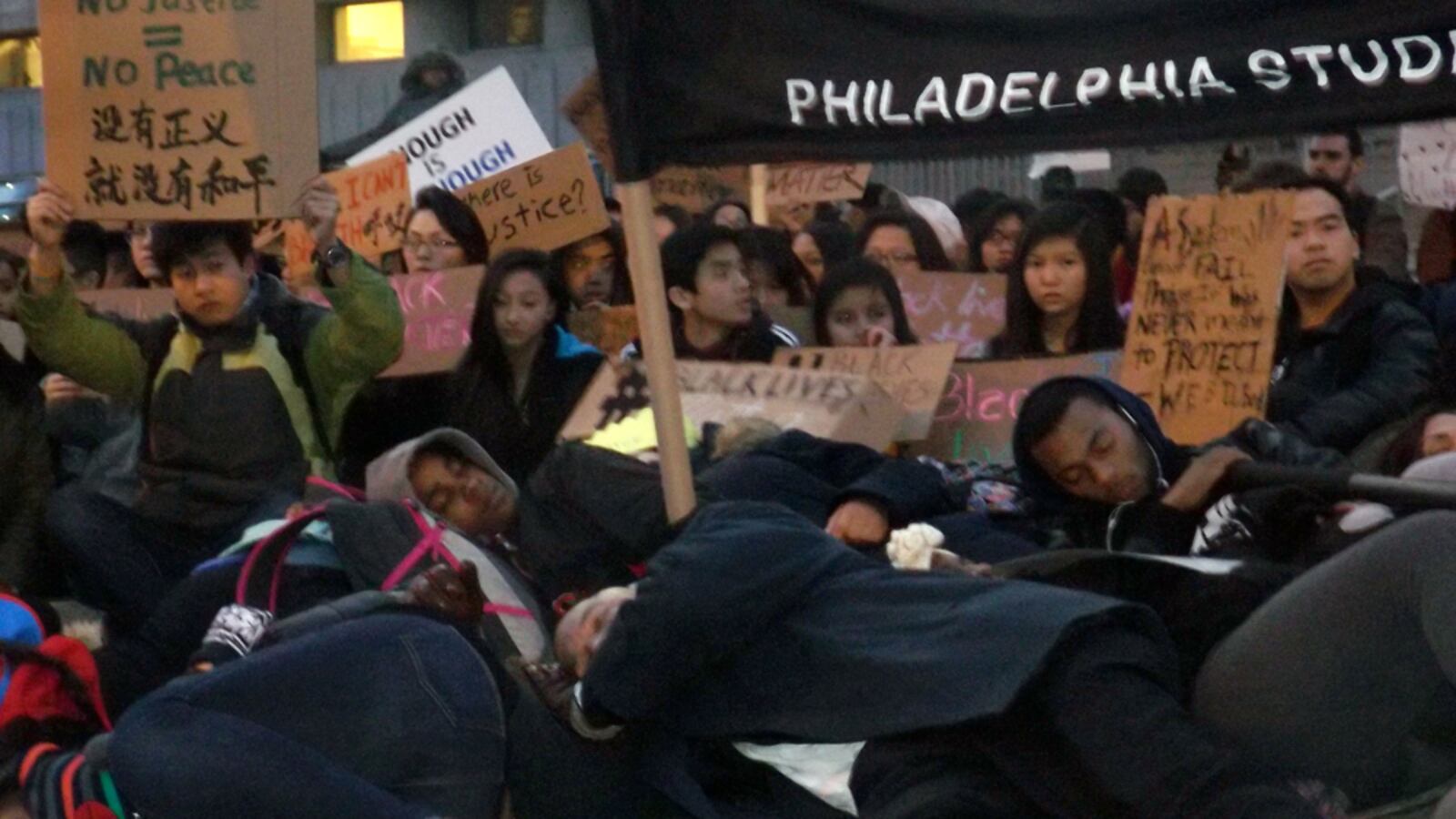This article was originally published in The Notebook. In August 2020, The Notebook became Chalkbeat Philadelphia.
Students gathered at the School District’s headquarters late Thursday afternoon to participate in a “die-in” to protest the grand jury decisions not to indict police officers in the deaths of Eric Garner and Michael Brown. They also honored the death of Laporshia Massey, a Philadelphia student who died last year after suffering an asthma attack in school, where no nurse was on duty.
More than 100 students and supporters took to the steps of 440 N. Broad St. to demand justice for those lost and for the unequal system of education in the Philadelphia area. They held signs and chanted phrases like “Black lives matter” and “No justice, no peace,” which have become rallying cries of protesters in the wake of recent shooting deaths of unarmed Black men and boys by White police officers.
Standing with her peers, Ruby Jane Anderson, a senior at Science Leadership Academy, said she wanted to highlight the kind of institutional violence enacted on African American students that “systematically denies young people the resources needed to succeed.”
“We’re trying to show how both the unjust killing of Black people by the police and school cuts are forms of state violence,” said Anderson, also a member of the Philadelphia Student Union, which helped organize yesterday’s demonstration.
Longtime PSU member Briana Bailey told the crowd that “Violence is power that hurts one’s chances of survival.”
“When they close our schools, that was violence,” Bailey said. “When they took away the resources we needed and cut our teachers, and took away our opportunities to have an adequate education and a real chance at a real future, that was violence. These acts of state violence are crimes against the students of Philadelphia.”
In addition to recognizing the deaths of Michael Brown, Eric Garner, and Tamir Rice, a 12-year-old boy in Cleveland, students came together to remember Laporshia Massey. She was the 12-year-old asthmatic student at Bryant Elementary whose death in September sparked debate about the drastic impact of budget cuts in city schools.
“Philadelphia schools continue to be some of the most underresourced, understaffed, yet over-policed, schools in not only Pennsylvania but this country.” said Bailey. “This is violence. Laporshia’s death was a result of a state government that refused to give us an adequate education.”
Yesterday’s die-in, held before the monthly action meeting of the School Reform Commission, was organized by the Philadelphia Student Union, Boat People SOS, and Asian Americans United.
The event was part of a wider day of action, “National Youth Action Against State Violence,” organized by the national networks Journey for Justice Alliance and the Alliance for Education Justice.
In recent weeks, students from schools including Central, Masterman, Science Leadership Academy, and the Academy at Palumbo staged die-ins, along with countless others at schools across the country, as a call to confront and dismantle systemically racist forms of policing and state violence against Black citizens.
“For weeks, die-ins have been happening all over the country,” said Bailey. “Today we stand with them.”


